There are two primary types of stretching, so what's the difference between static stretching vs dynamic stretching. Stretching is an essential and often overlooked aspect of any athlete’s workout routine. It’s critical to improving flexibility, mobility, and range of motion, which in turn, can help enhance an athlete’s movement patterns.
Static Stretching For After Workouts
Static stretching involves maintaining the stretch in a stationary position for a period of about 30 seconds. Static stretching is a great way for athletes to improve flexibility and range of motion and is typically used in post-workout cool down routines.
Static stretching isn’t necessarily the best strategy to utilize for warming up before a workout though, as it can actually decrease muscle power and performance if done for too long before exercise.
Dynamic Stretching To Warm-Up Before Workouts
Dynamic stretching requires an athlete to move through a range of motion to stretch and warm-up specific muscles before beginning a workout. Dynamic stretching is best used as part of a warm-up routine prior to exercise. It can help to improve overall flexibility and range of motion, as well as prepare the body for the rigors of exercise.
Dynamic stretching can also help to enhance athletic performance by increasing the power output of the body and reducing the risk of injury.
So what are some of the best ways to execute these types of stretches, either to prepare you pre-workout or help your body cool down after a grueling training session?
One of the most effective ways is to use VertiMax V8 platforms or the Raptor to assist with your dynamic stretching to warm-up and cool down, as it provides a resistance system that can really help to activate muscles or improve flexibility.
Let’s examine some of the static and dynamic stretching exercises to warm-up that athletes can use to take their performance to another level.
Static Stretching Exercises
As stated previously, static stretching should be reserved for post-workout periods to help increase flexibility. If athletes perform static stretches prior to athletic performance, it’s been shown to reduce force production, therefore limiting an athlete’s physical output. They can also increase risk of injury if performed before exercising, as it decreases the ability of the specific muscle to stabilize.
Static stretches also tend to focus on individual muscles, so it’s important to include several stretches so that athletes maintain flexibility throughout the body and don’t develop any imbalances in their range of motion. So with that said, here’s a few static stretches athletes should use after their workouts.
1. Posterior Capsule Arm Stretch
This is a great way for athletes to increase flexibility in their shoulder and is especially helpful for athletes who perform a throwing motion often, such as football and baseball players. To perform this stretch, you should bring one arm across your body and slightly pull toward your body, which should give you a mild strain in the back of your shoulder.

2. Kneeling Hip Flexor Stretch
This stretch is a tremendous way to enhance range of motion in their lower body, specifically their glutes and thighs. To perform, begin by kneeling on the ground, with the other leg up at a 90-degree angle. Put your hands on your hips while maintaining an upright upper body, then move your hips forward until you feel a stretch. Squeezing your glutes and thighs should also increase the strain you feel.
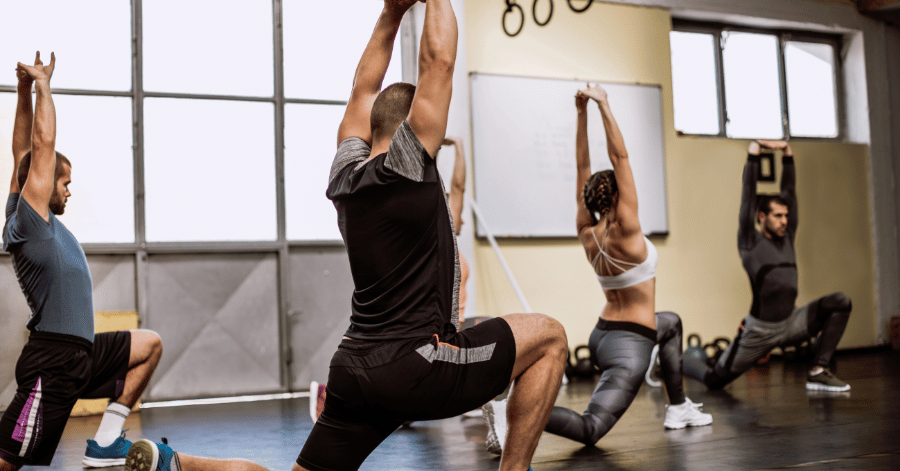
3. Kneeling Hamstring Stretch
For those looking for a way to stretch their hamstrings, this is a very effective way to go about it. Start by kneeling on one knee and put your other leg straight out in front of you. Keep your back straight and your toes up, then try to reach your toes. You should feel a strain in your hamstrings, but try not to extend yourself too far, as that could cause injury.
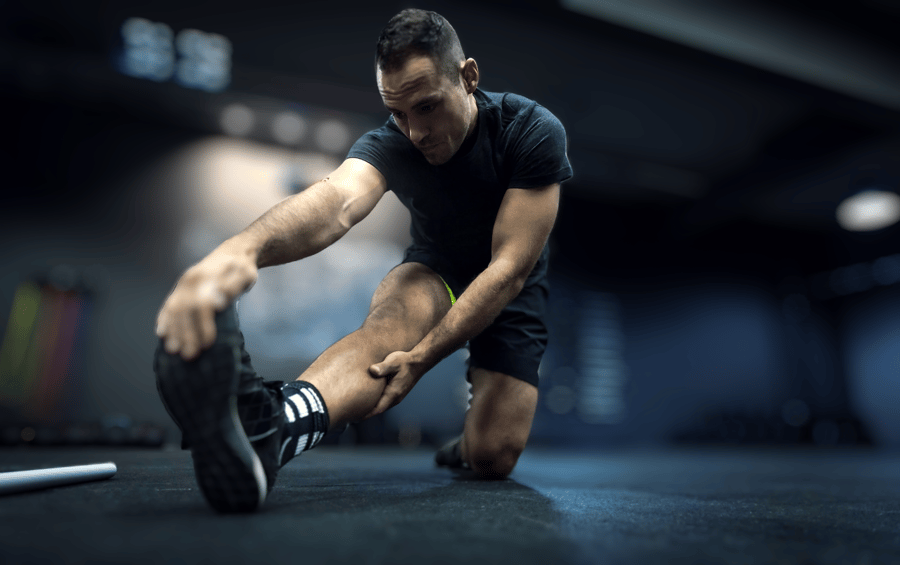
4. Quadriceps Stretch
Try this stretch to help loosen up your quads after a workout. Start by grabbing one ankle with your hand from the same side. Maintain good posture and try to extend your thigh backwards, bringing your knee and ankle toward your butt. Be careful not to torque your knee at all, as pulling it out of line with your hip could cause injury. This should create some tension in your quadriceps.
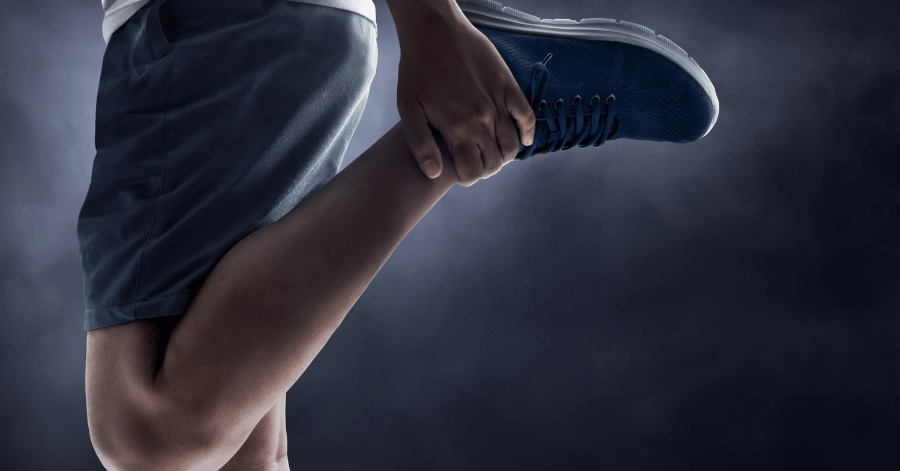
5. Adductor Floor Stretch
This is an excellent way to stretch out your groin/adductor muscles. Start by kneeling on the floor, then take one leg and extend it out to the side, keeping your foot on the ground and pointed forward. Then, put your hands on the floor and begin to lean your hips backward. This should give you a nice stretch on the inside of your thigh.
Dynamic Stretching Exercises
As opposed to static stretching, dynamic stretching can actually increase athletic performance, as it can enhance the body’s ability to produce force. It also helps prepare the body’s joint for athletic activity, which aids in preventing injuries for athletes.
Dynamic stretching is typically effective at activating multiple muscle groups, but athletes should still be mindful to include exercises that warm-up the entire body in an effort to avoid injuries. Let’s examine some of the best dynamic stretching exercises athletes can use to warm-up before a workout.
Dynamic Stretches for Lower Body
For a supercharged lower body warm-up, athletes should consider using the VertiMax, which can easily attach to their ankles and provides a wide range of motion. Here are some examples of dynamic exercises you can do with the VertiMax.
1. Straight Leg Lift
To activate your quads, try out this straight leg lift. While laying on your back and the resistance attached to your ankle, lift your leg straight up and back towards your head. Be sure to keep your core flexed while lifting your leg to really engage your quad. Check out the demonstration in the video below to see how you can perform this stretch.
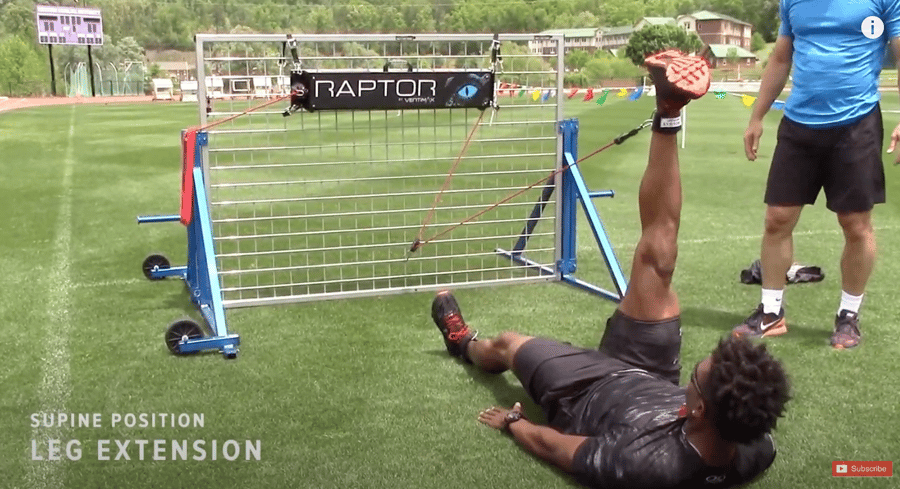
2. Bent Leg Extension
Another way to fully engage your quads is the leg extension with the VertiMax. While still laying on your back and your knee bent at a 90-degree angle, extend your leg up and towards you head. Here’s an example of how to do the stretch correctly.
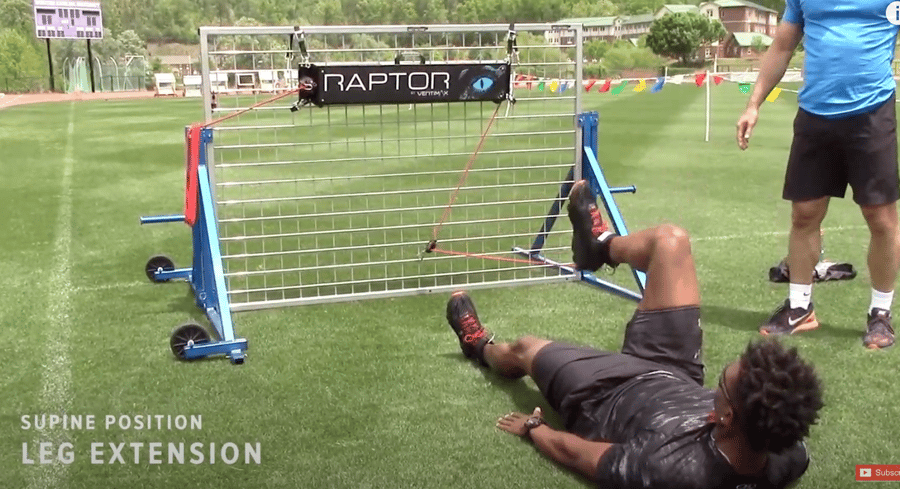
3. Knee Drive Cross Chest
This exercise is a great way to loosen up your hips before a workout. While laying on your back, bend your knee as you begin to raise your leg up and drive it across your body. Make sure to keep your upper body on the ground while performing the motion to help engage your hips. The video below should give you a good idea how to execute this stretch.
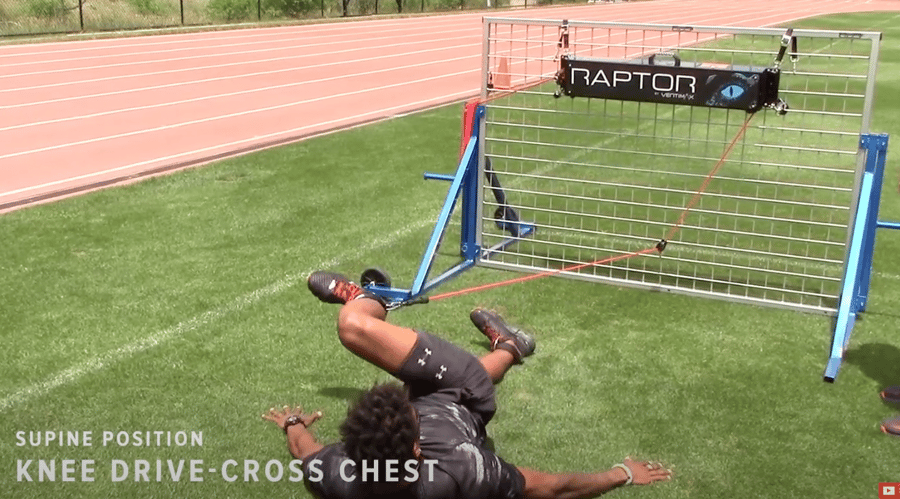
4. Knee Drive
Another way to really activate your hips is with the knee drive. Instead of driving up leg across your body, this exercise requires you to bring it straight up while bent at a 90-degree angle. Make sure to bring your knee up to chest level, so you can really feel the stretch in your hips.
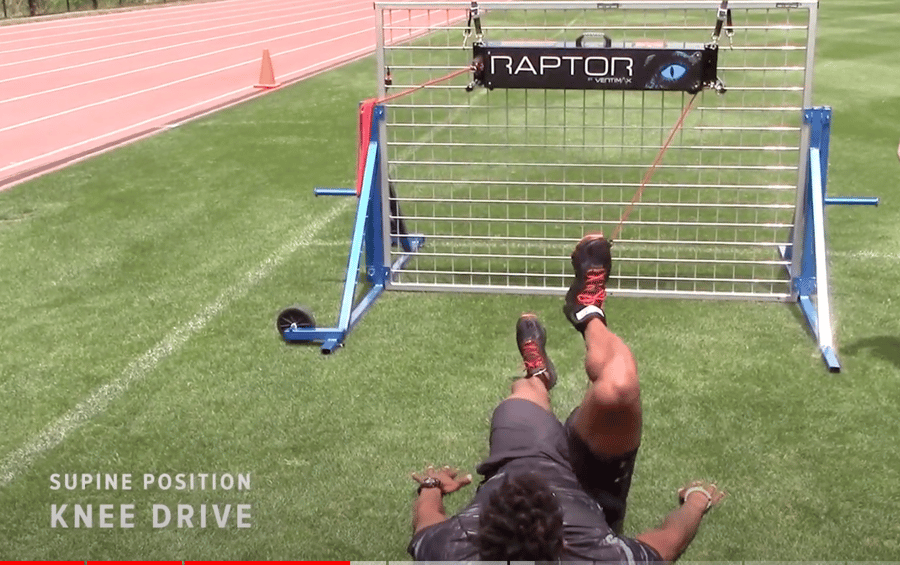
5. Adductor Leg Movements
This is where the versatility of the VertiMax really stands out, as it gives you unlimited range of motion to stretch out all of your muscle groups, including the tough-to-reach adductor muscles. For this exercise, you need to be in a plank position. With resistance attached at your ankle, extend you leg out away from your body, then bring it back towards your body. For a good example of how to do this exercise, check out the video below.
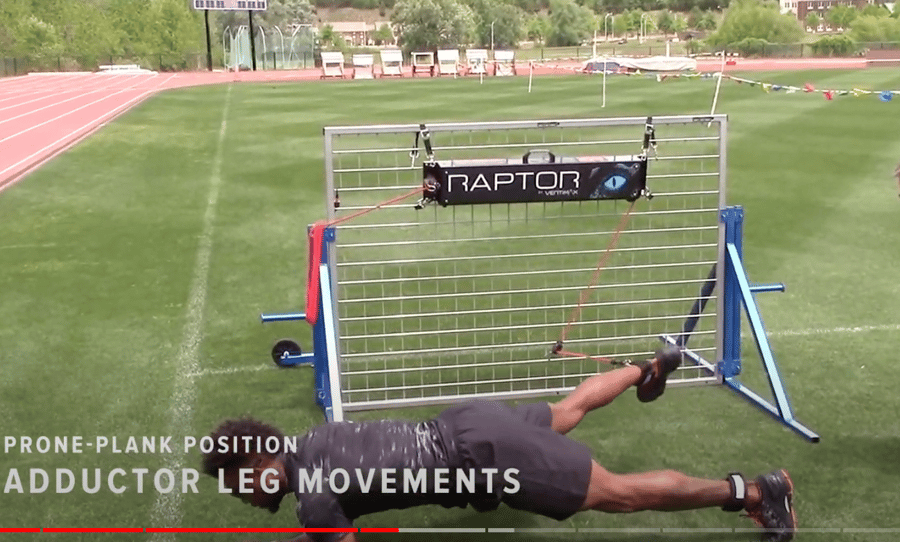
6. Perpendicular Knee Drive
After working the interior muscles of your leg with the adductor exercise, you can target the exterior muscles of your leg with the perpendicular knee drive. While maintaining a plank position, raise and drive your knee up while keeping it bent at a 90-degree angle. You should focus on keeping your core tight to engage your quad and hips.
Dynamic Stretches for Upper Body
1. Torso Twist
For athletes looking for a way to activate the muscles in their back, this stretch is a great way to accomplish this. To perform, begin by standing straight up with your arms raised up to the level of your shoulders out to the side. While keeping your lower body stationary, twist your upper body in one direction, then twist in the other direction. This should loosen up the muscles in your core and help boost athletic performance.
2. Arm Circles
This stretch is an effective warm-up for athletes who need to frequently perform a throwing motion. Starting with your arms out to your sides at shoulder height, move your arms in small circles in a forward motion. Do 10-20 reps and switch to a backward motion. You can gradually increase the size of the circle motion to help improve the range of motion.
3. Arm Swings
For those looking for a way to engage their entire body during a warm-up, arm swings should be added to their routine. Begin with your arms up at your sides and palms downward, then while keeping your upper body straight and walking forward, swing your arms to one side. You can continue walking and swinging your arms in each direction, which will help warm-up your lower body as well.
Activate your Best Performance with VertiMax
For more exercises and instructions on dynamic warm-ups with the VertiMax, check out the links to the videos below. Make sure to visit VertiMax.com for more information about how VertiMax can help you with injury prevention and preparation for training. For any questions on how to get started with VertiMax, reach out to customer support to help improve your athletic performance today.

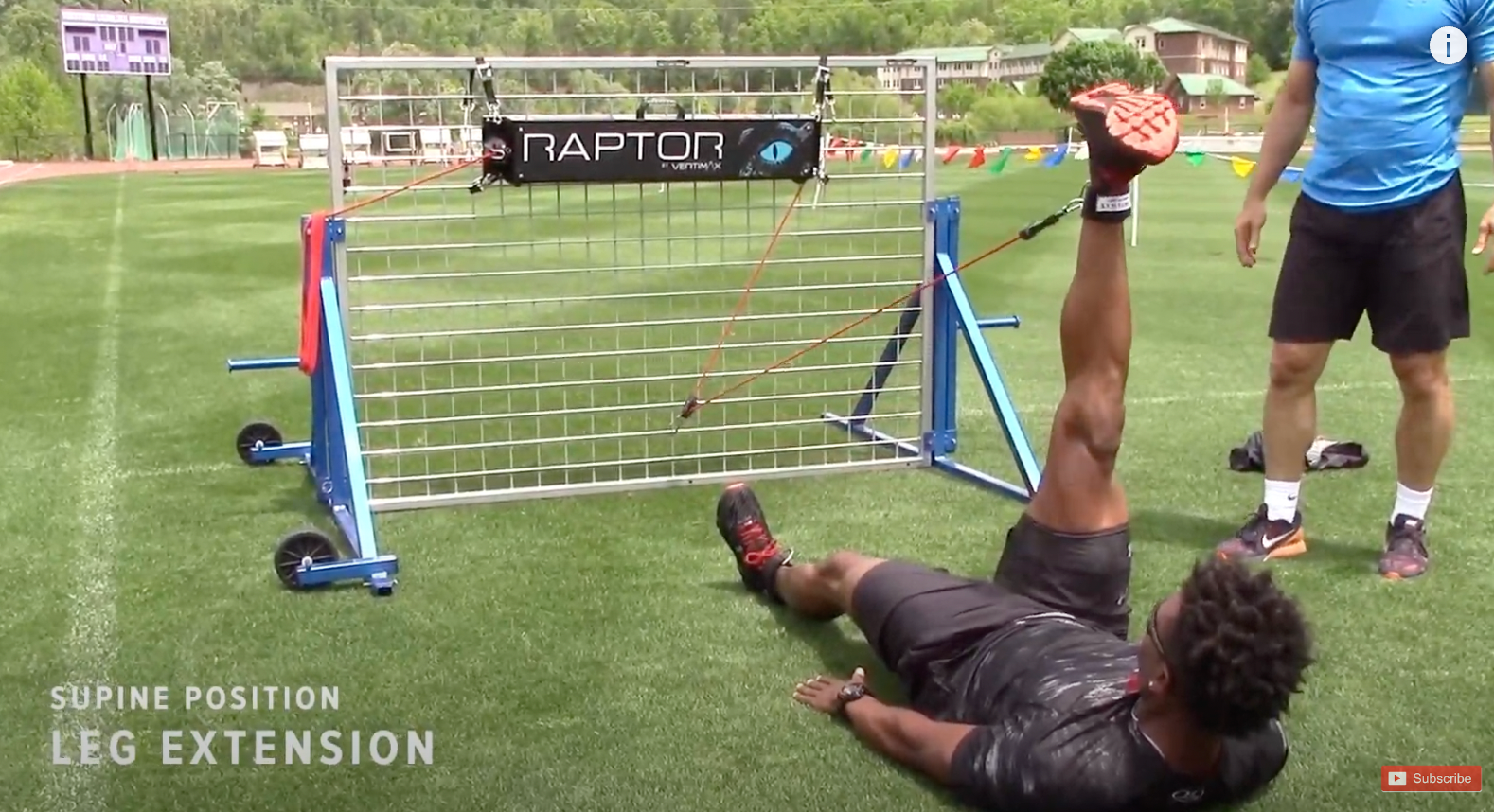
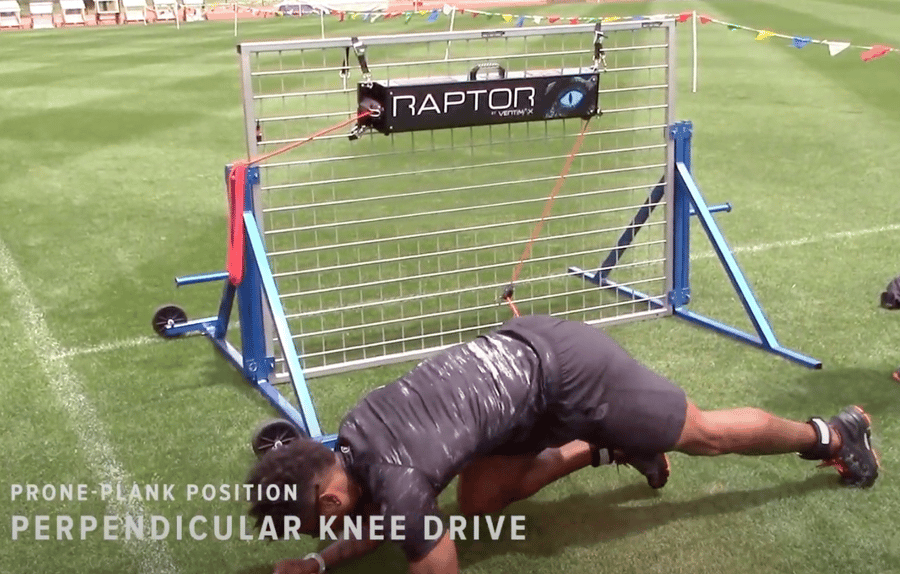



.png?width=110&name=Listing%20Image-basketball%20ladder%20drill%20%20(350%20x%20350%20px).png)














